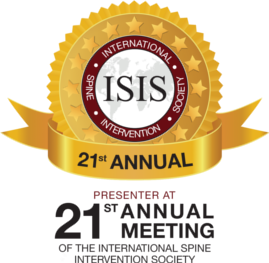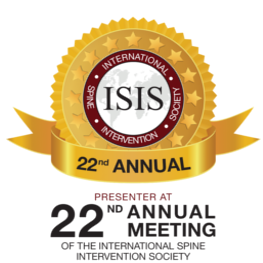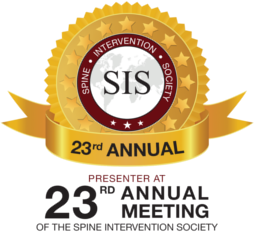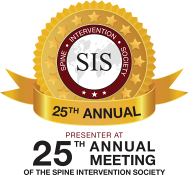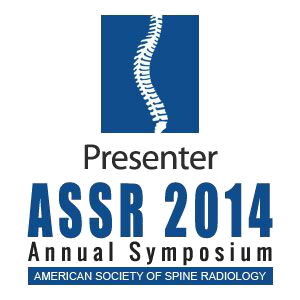Minimally invasive spine surgery (MISS) is a kind of operation performed on the spine’s bones and structures utilizing smaller incisions than conventional open surgery to avoid damaging surrounding muscles and soft tissues. MISS treatment is performed by a neurointerventional surgeon on patients suffering from herniated discs, spinal stenosis, degenerative disc disorder, and other spine disorders. The procedure offers several benefits, including reduced pain, reduced blood loss, reduced hospital stay, and less scarring. However, you will require a competent and skilled neurointerventionist to perform the MISS procedure for maximum benefits.
Overview of MISS
MISS is an advanced alternative to conventional open surgery. It uses minor cuts to avoid scarring and soft tissue damage. The treatment addresses various backbone problems using advanced techniques that cause little or no damage to the surrounding soft tissues.
The traditional open surgery involves significant cuts to open the skin covering the spine. Additionally, surgeons must cut muscles and tissues surrounding the backbone and pull them apart to have clear access to the affected area of the spine. Although open surgery addresses many back problems, it results in many complications like excessive bleeding, throbbing pain, and long recovery periods that lead to extended hospital stays and hefty hospital bills.
If fear of open surgery has kept you from seeking treatment, MISS provides a less invasive alternative. Your neurointerventionist makes an incisions through the skin. The cut allows for the passage of tubular retractors or endoscopes that make a tunnel for the surgeon to access the impacted spine area. The tunnel the retractor creates enables the surgeon to pass their tools through to fix the spine concern. A surgeon can perform a complex spine surgery through a tiny surgical area with the procedure. Therefore, by the end of the treatment, there is minor damage to the muscles, soft tissue, and skin near the surgical area. Besides, when minor cuts are involved, the recovery period significantly reduces.
However, despite the many benefits of MISS over open surgery, not everybody with spine complications is eligible for the treatment. Therefore, you should consult a neurointerventional surgeon when experiencing spine complications. After a thorough evaluation, the surgeon will recommend the appropriate treatment for your spine concern. The neurointerventionist can often address the problem through therapy and medication. However, when these are ineffective, the surgeon will recommend spine surgery.
MISS Types
Various spine operations adopt the MISS procedure. These include:
Spine Decompression
Spine decompression is a procedure that alleviates pain in the spine caused by neural impingement. It relieves the pressure on the spinal nerves by removing a tiny portion of the spinal bone, also called the vertebra, ligament, or spinal disc, to create more room for the nerves to recover.
The treatment helps address many backbone problems, including:
- Spinal stenosis
- Pinched or decompressed nerves
- Sciatic nerve damage
- Herniated disk
- Degenerative disk disease
- Bulging disc
Generally, spinal decompression addresses the narrowing of the spinal canal, which compresses the nerves, resulting in sciatica nerve damage and pain.
Minimally invasive spine decompression involves minor cuts and no anesthesia. The incision allows for the passage of equipment the surgeon depends on for the decompression.
Discectomy
Neurointerventional surgeons perform a discectomy to extract herniated discs in the spine. The treatment removes the intervertebral discs, the flat round cushions that sit between vertebrae and protects the spine by absorbing shock.
There are two types of discectomies. One is open surgery discectomy, where the surgeon makes a large incision to move muscles and access the damaged discs or disc fragments for extraction.
Alternatively, your surgeon can perform a less invasive spine discectomy, which involves a small cut and a series of dilators or tubes that create a tunnel. This tunnel enables the surgeon to pass the endoscope to the damaged disc and perform the surgery within a small area.
Spinal Fusion
Another form of surgery that uses MISS is spinal fusion. The treatment reinforces or strengthens your spinal structure and creates stability by linking two spinal bones. The bones anchor each other to alleviate backbone and nerve symptoms.
The backbone usually has ring-shaped bones. If these are not adequately interconnected and engage in several disjointed movements, it becomes difficult to hold the body upright and can lead to severe back and neck pain. Thankfully, spinal fusion fuses or connects the disconnected bones using MISS to create stability and reinforce the spinal structure, alleviating pain and helping you keep the body upright.
MISS is, therefore, used for decompression and stabilization of the backbone.
Spine Conditions Treated Using MISS
Minimally invasive backbone surgery helps address or control various spine disorders, including:
-
Degenerative or Slipped Disc Condition
Slipped disc disease is a spine problem that develops due to the gradual wearing off or degeneration of the intervertebral discs as you age. The condition is common among senior citizens and stems from flexibility loss and disc stiffening caused by the cushions wearing off and rubbing against each other.
-
Sciatica
The sciatic nerve is composed of the L4 to S3 spinal nerves. The nerve is responsible for leg muscle function and sensation of the entire leg. When the spinal nerves composing the Sciatica nerves are irritated due to compression from a ruptured or herniated disc, you develop sciatica. The term refers to multiple symptoms associated with direct compression of the backbone nerves, including pain and numbness.
-
Herniated Disc
Between the vertebrae or spine bones, intervertebral discs exist that act as shock absorbers. They stabilize the backbone when sitting or standing, but when exposed to undue stress or degenerate over time, the material encased in the disc could exit, causing a herniated disc. The disc material directly compresses the spinal nerves after exiting, causing severe pain that radiates through the legs, arms, and shoulders. The condition is sciatica if the compressed nerves are the primary leg nerves. However, for herniated discs, the pain radiates to the back and affects muscle function and, in severe cases, bladder or bowel incontinence.
When you experience herniated disc symptoms, you should see a neurointerventional surgeon for a physical evaluation. Physical examination is essential even if you are not experiencing pain, as some conditions do not cause pain. After a thorough exam, including magnetic resonance imaging (MRI), the surgeon diagnoses you with a herniated disc, and they will recommend therapy and medication. However, when the symptoms persist even after a spinal injection, the neurointerventionist will suggest MISS.
-
Spinal Stenosis
The narrowing of the backbone canal or several other nerve passages due to degeneration, congenital, or arthritis is called spinal stenosis. The condition is prevalent among adults and is associated with pain when walking or standing. The pain reduces when you lean forward or sit as the spinal canal enlarges. The primary cause of the condition is backbone degeneration due to age or ligament overgrowth. If you are experiencing symptoms, consult a neurointerventional surgeon to establish the source. After diagnosis, the surgeon can recommend medication and therapy. If pain management through therapy and drugs fails, the other treatment is spinal injections. Nevertheless, your option will be MISS when the condition does not improve, even with injections.
-
Spinal Deformities
A spinal abnormality or deformity is a spine disorder identified by abnormal curves varying in size and shape. These abnormal curves result in back and neck pains and, in severe cases, can result in an imbalance. When physical therapy fails to fix these backbone deformities, your surgeon will perform a MISS procedure as the last option.
-
Vertebral Compression Fractures (VCF)
VCF develops due to trauma to the backbone. Therefore, if you experience sudden back pain that comes and goes, you should visit a minimally invasive backbone surgeon for an examination. If diagnosed with VCF, the doctor will perform a MISS procedure to treat the source of your symptoms.
Other backbone problems you can treat with MISS are:
- Spondylolisthesis
- Spinal infection
- Spinal tumors
- Scoliosis
- Kyphosis
MISS Candidacy
After being diagnosed with a spine disorder, it is up to your neurointerventionist to determine the appropriate treatment. Typically, other pain management options like physical therapy and medication are not working; the surgeon can opt for MISS over open surgery, depending on the circumstances unique to your condition.
First, the surgeon must ensure that your backbone is accessible through minor spine tunnels or corridors created by tubular retractors.
Also, MISS is an option if the expert can locate the specific area of the spine with a disorder or injury. However, if there is no exact location that can be associated with the spine disorder, your surgeon will have no other option than to go for open surgery.
MISS Procedure
Before being scheduled for MISS, you must visit your neurointerventionist’s clinic for an examination. The surgeon will also need additional tests, such as an MRI, CT scan, and X-rays, to obtain clear images of your spine and develop a treatment plan.
Additionally, before the procedure, the surgeon will give the following instructions to improve the success rate of the procedure:
- Quit smoking if you are a tobacco smoker
- Engage in frequent physical activity before the surgery to reduce the recovery window and maintain the body and muscles in proper shape.
- Quit nonessential drugs or supplements or pain medications like opioids, as they disrupt healing.
- Prescribe antibiotics to lower the risk of spinal infection after treatment
- Adhere to the doctor’s directions on the right foods and beverages to consume before surgery
- Have a designated driver take you home after the hospital stay, as you will not be fully healed
MISS Steps
Based on the kind of MISS you are undergoing, an anesthetist will administer local anesthesia to numb the location of the spine where you are experiencing problems. Alternatively, the anesthetist can administer general anesthesia to put you to sleep through the entire process.
After numbing, the surgeon will cut open the skin on your back, chest, or abdomen. The next step is to insert a tubular retractor to create a corridor for the passage of a microscope or endoscope to visualize the surgical area.
The corridor or channel created also enables the passage of special surgical tools used for the MISS.
Once the treatment is complete, the surgeon removes the tools and retractors to allow the muscles near the operation area to return to normal.
The final step is suturing the incision area and bandaging it.
Techniques Used in MISS to Reduce Trauma
Apart from tubular retractors, other techniques used to minimize trauma during the least invasive backbone surgery are:
- Rods and screws placement
- Direct lateral access route
- Thoracoscopic access routes
Certain hospitals or practices use robotic surgeries to increase the accuracy and effectiveness of the MISS. Check with your surgeon to understand the techniques they will adopt for your treatment and their effectiveness.
Length of MISS Procedure
During the initial consultation, your surgeon should explain your type of MISS and the duration of the procedure. Depending on the complexity, treatment could last one to several hours.
MISS Recovery
MISS involves tiny cuts to access the affected area of the spine. With small incisions involved, the recovery window is small, so you will be taken to a recovery room to allow the local or general anesthesia to wear off.
You could be discharged from the hospital on the same day, depending on the procedure type. Because pain and soreness are common after the treatment, the surgeon will give instructions on caring for the incision area and prescribe painkillers to manage the pain. Afterwards, they will discharge you. Although you will experience some discomfort, the pain is not as severe as in open surgery, where there are large incisions that cause muscle and tissue trauma.
However, some procedures require you to stay in the hospital for 24 to 36 hours, depending on the work done by the neurointerventionist. After discharge, you should not engage in vigorous activities, as the body is not fully healed. The surgeon could also refer you to a physical therapist for quick healing. Therapy strengthens spine muscles and improves vertebrae stability.
The recovery duration of the treatment depends on the cause of your symptoms, age, procedure complexity, overall health, and other aspects. On average, healing can take months or sometimes weeks. You are advised to rest and avoid heavy lifting in the early weeks for quick healing. Also, follow-up appointments after discharge are encouraged to enable the surgeon to track your recovery and address any concerns you have about your healing.
You should call 911 if you have breathing problems or severe headaches. Besides, visit your surgeon if you notice fever, swelling, or bleeding in the cut point.
MISS Benefits
No one thinks they will ever require a spine operation. Surgeries, especially open ones, are unideal and are linked to several complications. These complications can have life-changing effects. Thankfully, as surgical technology advances, new techniques have been introduced to reduce complications and improve efficiency. One of the trending backbone surgeries is MISS because of its several benefits over traditional open surgery.
One reason MISS is preferred over open surgery is the minimal risk. The procedure makes minor cuts that cause little or no harm to surrounding tissues and muscles. The minor cuts also lower the risk of spine infection.
Similarly, the small incisions mean less scarring, making the procedure more esthetically appealing than open surgery. The scars in traditional surgery can lower self-esteem and could require additional treatment to remove.
Minor cuts also translate to shorter recovery or healing durations. Some surgeries are even performed on a single visit, and depending on your adherence to post-surgery instructions, you can resume your routines within a few days.
Besides, MISS is less traumatic than open surgery. There is less bleeding, and the risk of injuring nerves, muscles, and soft tissue is minimal. This is unlike open surgery, where there is severe bleeding and a risk of injuries to muscles and nerves due to significant cuts.
The success rate is also high, provided you set reasonable expectations. The success of the treatment depends on the technique adopted by the neurosurgeon. MISS is deemed highly successful because it minimizes pain symptoms in patients with spine disorders. Consult with your surgeon to understand what to expect at the end of the treatment.
Lastly, if you are allergic to anesthesia, MISS procedures require little local anesthesia to numb the operation area. Therefore, anesthesia-related complications are minimal.
MISS Downsides
As much as MISS has many benefits, it also has risks, like any other surgery. The risks of the procedure are:
- Infections, although you can manage these by taking antibiotics before and after treatment
- Severe bleeding when the procedure goes wrong
- Nerve damage is still possible even with small incisions because accidents can happen
- Pain resurgence if the treatment is unsuccessful
- Pain in the incision area
- Additional surgery requirement
- Allergic reaction to anesthesia
- Lack of pain relief
- Failure by the vertebrae to fuse appropriately during spine fusion
MISS rarely goes wrong, but it can. If unsuccessful, you could require another procedure or seek a second opinion from a neurointerventionist who applies different techniques.
Find a Competent Neurointerventional Surgeon Near Me
With rapid medical technological advancements, you can avoid open backbone surgery for your spine disorders. MISS is an effective alternative for open surgery and offers many benefits. If you are considering the treatment, your surgeon will perform a physical exam and suggest the appropriate treatment.
Spine surgeries are life-changing, and you want the treatment performed by a competent surgeon for better results. At LAMIS, we have competent neurointerventionists who will use their skills and experience for a positive outcome. Contact us at 310-734-6088 for an examination if you are experiencing symptoms of spine disorder or have questions regarding MISS.

